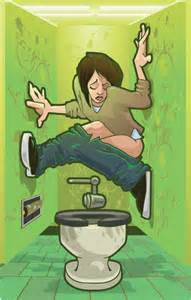There is an increasing amount of research validating the use of visual aids and strategies.
Frequently Asked Questions:
The Use of Visual Supports to Facilitate Transitions of Students with Autism
Visual supports were used to aid transitions from one activity to another for two elementary boys. Data revealed a significant decrease in the latency between the time the students were given instructions and the time they began the next activity when the visual supports were used. Visual supports also resulted in a significant decrease in teacher-delivered verbal prompts and physical prompts during a transition. – Dettmer, S., Simpson, R.L., Myles, B.S., & Ganz, J.B. (2000). Focus on Autism and Other Developmental Disabilities, 15, 163-169.
Using an Activity Schedule to Smooth School Transitions
Functional assessment of a preschool child’s aggressive and disruptive behaviors identified antecedent conditions associated with difficulties during transitions from one activity to another. A schedule board produced a dramatic decrease in aggression and increase in cooperative behavior in the classroom. – Journal of Positive Behavior Interventions, Vol. 3, No. 1, 57-61 (2001)
Teaching Daily Living Skills to Children With Autism in Unsupervised Settings Through Pictorial Self-Management
Study of 3 low-functioning children (ages 6-9) with autism found children could successfully use pictures to manage their self-care behavior in the absence of a treatment provider, generalize their behavior across settings and tasks, and maintain behaviors at follow-up. When picture order was manipulated, subjects followed the new picture sequence. – Pierce, K.L. & Schreibman, L. (1994). Journal of Applied Behavior Analysis, Vol. 27, No. 3, pp. 471-481
Effects of Using Photographic Cueing Package During Routine School Transitions with a Child Who Has Autism
Photo cues were used for teaching a 6-year-old with autism to make successful transitions in daily routines. Providing advance notice of an activity change using combined verbal and photo cues helped reduce child’s tantrums while increasing number of appropriate transitions.- Schmit, J., Alper, S., Raschke, D., & Ryndak, D. (2000). Mental Retardation, 38, 131-137.
Using an Instructional Package Including Video Technology to Teach Self-Help Skills to Elementary
Video modeling and video prompting were used to successfully teach 3 self-help skills (cleaning sunglasses, putting on a wristwatch, and zipping a jacket) to 3 elementary students with mental disabilities. – J.M. Norman, BC Collins, J.W. Schuster – Journal of Special Education Technology, 2001

Vizually Speaking understands that finding time in today’s high demanding world to create visual aids and strategies can be a great challenge. Vizually Speaking is committed to collaboratively work together providing a step by step support, assisting in the development and implementation of individualized visual aids and strategies. For a FREE consultation contact us today.
EVERYONE benefits from the use of visual aids and strategies. Visual aids and strategies are adaptable, portable and can be used in most situations. They provide structure and routine, encourage independence, build confidence, improve understanding, avoid frustration and anxiety, and provide opportunities to interact with others. They can make communication physical and consistent, rather than fleeting and inconsistent like spoken words can be.
Visual aids and strategies are extremely helpful for an individual with communication, behaviour, learning challenges, special needs or exceptionalities including but limited to:


✓ Attention Deficit Disorder (ADD)
✓ Attention Deficit Hyperactive Disorder
✓ Alzheimer’s
✓ Aphasia
✓ Asperger’s Syndrome
✓ Auditory Processing Disorder
✓ Autism
✓ Behaviour Disorder
✓ Bilingual/ESL
✓ Communication Disorder
✓ Comprehension Problems
✓ Dementia
✓ Developmental Delay
✓ Down Syndrome
✓ Emotional Impairment
✓ Fragile X syndrome
✓ Head Injury
✓ Hearing impairment
✓ Language Delay or Disorder
✓ Learning Disabilities
✓ Mental Impairment
✓ Multiple Exceptionalities
✓ Nonverbal Language Disabilities
✓ PDD-NOS
✓ Sensory and Processing Difficulties
✓ Speech Disorder
✓ Stroke
✓ Visual Impairment
And more . . .
Vizually Speaking understands that finding time in today’s high demanding world to create visual aids and strategies can be a great challenge. Vizually Speaking is committed to collaboratively work together providing a step by step support, assisting in the development and implementation of individualized visual aids and strategies. For a FREE consultation contact us today.
CONTACT US TODAY!
Effective visual aids are one of the greatest assets a person can have. For the user, they are a way to express, understand or process information in a simple way that makes sense to them. For a visual thinker, using visual aids to correctly represent a concept removes the need to convert what is being heard into images. For an individual on the autism spectrum, visual aids and strategies improve communication, reduce or eliminate undesired behaviors and teach appropriate social skills allowing them to participate successfully in daily life.
Visual thinkers-someone who associates all information with imagery-take longer to process, sort through and find the information they need to retrieve or receive information to communicate when converting words into images. Visuals like schedules, token boards and timers (visuals for organization) work for people with autism. They are tried behavioural tools. – Linda Hodgdon, M. Ed., CCC-SLP and consultant for Autism Spectrum Disorders
Visual Aids help people who have difficulty with:
✓ Communicating
✓ Social interaction and etiquette
✓ Behaviour
✓ Anxiety
✓ Change or transitions
✓ Sequencing information
✓ Processing
✓ Following instructions and routines
✓ Organization
✓ Listening and attending
✓ Understanding and responding
✓ Independence
And more…


Imagine the joy and success of an individual stringing multiple visual aids together to express, understand or process information. Vizually Speaking is committed to taking action now. Observing, understanding and engaging, using visual aids and strategies will make a difference! For a FREE consultation contact us today.
CONTACT US TODAY!
Humans are visual beings. Neuroscientists state that 50-80% of our processing is dedicated to seeing and processing. Once our brain sees something, it tries to develop a memory for it. It defaults to images for words. We remember images and we forget words.
10% of what you hear
20% of what you read
80% of what you see and do



Most of the information we consume and interpret is visual. Scientific and educational research agrees that 75% of learning is through vision. Visual aids transcend language and words allowing for greater understanding and/or expression. Using visual aids increases the speed of understanding while removing the potential for misinterpretation. For a visual thinker using visual aids to correctly represent a concept removes the need to convert what is being heard into images.

Pictures translate across culture, education levels and age groups…the richness of the whole picture can be taken in at a glance. – Educator Jay Cross

The more visual the input becomes, the more likely it is to be recognized and recalled. – Dr. John Medina, Neuroscientist
The quote “A picture is worth ten thousand words” refers to the concept that a complex idea can be conveyed with just a single image. EVERYONE benefits from the use of visual aids and strategies.
Workshop Presentation - Visual Aids and Strategies
Contact Vizually Speaking today to learn how Visual Aids and Strategies can decrease the undesired behaviour(s), improve communication, promote independence and increase self-confidence. Through our dynamic presentation you will:
✓ Uncover the importance of using Visual Aids and Strategies.
✓ Discover the benefits of Visual Aids and Strategies.
✓ Learn how to overcome communication barriers.
✓ Promote independence and decrease undesired behaviours.
✓ Be introduced to NEW resources.
EVERYONE benefits from Visual Aids!

Vizually Speaking understands that finding time in today’s high demanding world to create visual aids and strategies can be a great challenge. Vizually Speaking is committed to collaboratively work together providing a step by step support, assisting in the development and implementation of individualized visual aids and strategies. For a FREE consultation contact us today.
CONTACT US TODAY!

Pictures, objects, written language and anything else visual, are referred to as visual aids and strategies. They are essential to use when supporting communication, behaviour, and organization. Everyone can benefit from having visual aids to help them remember and understand. A sign, calendar, schedule, photo album or “To Do” list, are just a few common visual aids used in many people’s daily lives.

A daily schedule is one of the most used visual tools. That’s because they work really well to help students follow their daily routines. Everyone benefits from knowing what is going to be happening today. – Linda Hodgdon, M. Ed., CCC-SLP and consultant for Autism Spectrum Disorders

Visual Aids:
✓ Are simple
✓ Are easier to understand
✓ Are easier to process
✓ Assist in organization
✓ Assist in memory recall
✓ Are used by everyone daily
✓ Convey a message in an easy way
✓ Support expression of wants and needs
✓ Break down language barriers
✓ Provide a summary of information
✓ Take less time to understand
✓ Testability to break down concepts
✓ Are motivating
Vizually Speaking understands that finding time in today’s high demanding world to create visual aids and strategies can be a great challenge. Vizually Speaking is committed to collaboratively work together providing a step by step support, assisting in the development and implementation of individualized visual aids and strategies. For a FREE consultation contact us today.
CONTACT US TODAY!

Where To Go On The Go?


This blog is brought to you because we have ALL been there at one time or another and if you haven’t yet you’re bound to. Whether it be for yourself, a friend, a family member or a passenger, the time comes when you have to find a washroom while you’re on the road. Let’s face it not all bathroom/restroom standards are alike making it one of the most dreaded thoughts most all of us have. So where do you go when you’re on the go?
Well with your help we can finally solve this great mystery. How? Simple… Just click on the Washroom checklist and check out the criteria. Then take a picture, share the name and location of your washroom experience and post! Include any comments about your experience as well as recommendations on the blog.
Let’s get this show on the road so our road trips are more pleasurable.
Thanks in advance to all who contribute.
Happy travels!

